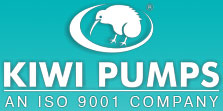
Pumps Information » Jet Pumps
Jet Pumps
Jet Pumps are capable of handling all forms of motive fluid including gas, steam, or liquid. They are typically inserted vertically into the process media, but can be mounted horizontally as well. Multiple inlets are used to draw in a constant stream of fluid, using pressure to create lift through suction. The combination of intake pressure and velocity of the liquid or gas jets the media up from a well, tank, or pit through the pump to the discharge point.
Jet pumps function based upon the Bernoulli theorem; pressure and velocity measured at points in the nozzle, diffuser, or suction chamber along with the specific gravity of the fluids transferred can yield the operating head and/or discharge velocity. The net positive suction head (NPSH) is the relationship using the distance from the intended centerline of the jet pump and the depth of the storage area, the specific gravity of the fluid, and the pressure at the specified temperature.There are four main types of jet pumps; deep well, shallow well, convertible, multi-stage, and mini. Deep well jet pumps are used in high volume applications, such as oil wells, which range from 800-15,000 feet in depth. Shallow well pumps are used in applications where the media is close to the surface, such as residential wells. Convertible jet pumps can be used for either deep or shallow well applications.
Miniature jet pumps are used for smaller applications, such as aquariums. Jet pumps are often used in applications where the material that is pumped assists in the creating the motive force needed to move through the pump. For example, in marine applications, jet pumps are used to transfer seawater. Jet pumps can be considered mixers or circulators since the intake combines fluids. In home applications, jet pumps, also referred to as ejector pumps, are used to move wastewater up to the sewer line. A float level sensor and switch are used to turn on the pump. Other accessories may be used such as impellers, strainers or filters, a motor or drive.Jet pumps are less efficient than hydraulic pumps due to such factors as friction loss, but may be more efficient when working with combined media that includes gases and variable well conditions where the surface characteristics include turbulence.
Many jet pumps are self-priming and are constructed so that they can create and maintain a sufficient vacuum level to draw fluid into the inlets with no external assistance.When choosing a jet pump, the type of fluid and conditions will affect the flow rate. An annular nozzle may be used in media that has a higher solids content in mining applications or sand or mud removal. In some well or bore hole applications where external pressures and internal pressures exceed the material specifications and the pressure specifications of jet pumps, the throat of the pump can collapse which will cause extreme reductions in flow. Housing material for jet pumps can range from polypropylene (PP), polyvinyl chloride (PVC), acrylic, polytetrafluoroethylene (PTFE), steel, stainless steel, and other materials such as glass. Stainless steel housing and other accessories including impellers and suction screen are often used with corrosive or abrasive materials.
